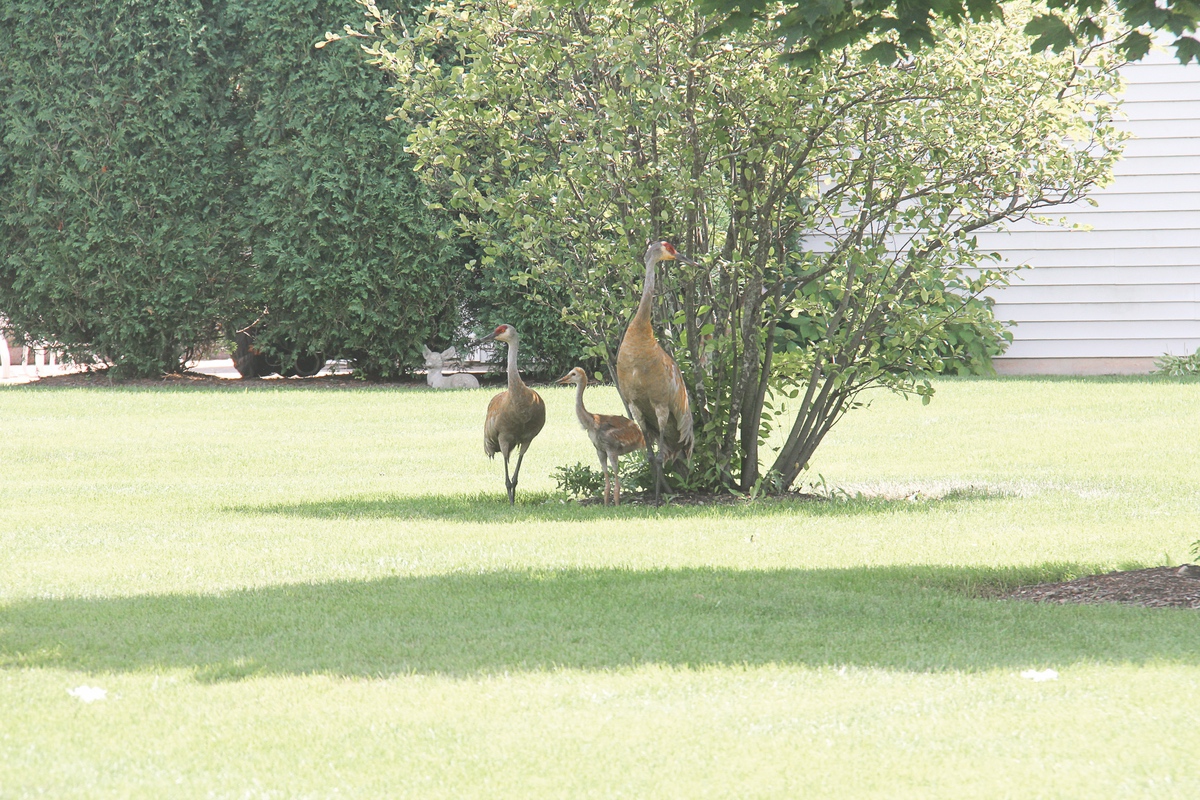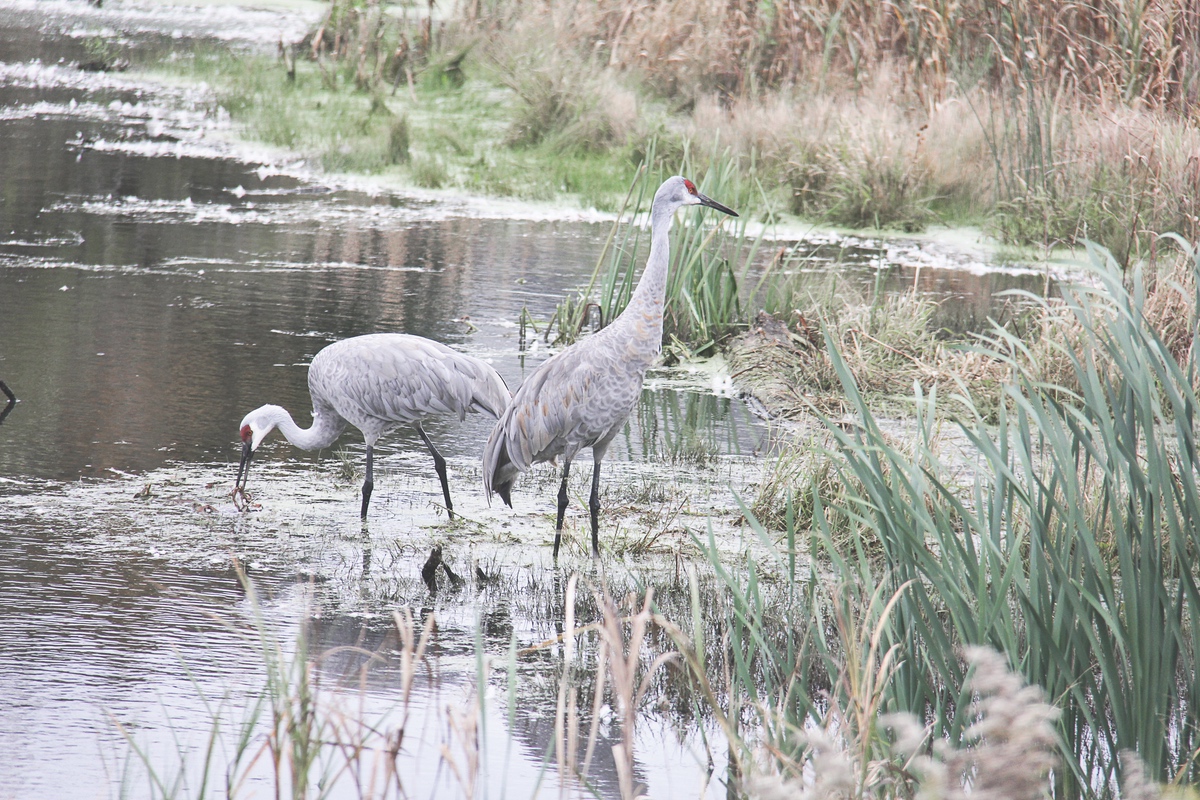In the last issue of Sun Day, we discussed Canadian Geese, resident-geese in Sun City and throughout northern Illinois.
In this edition, we are focusing on Sandhill Cranes, which, in contrast, are migratory birds that have also made an impressive recovery from near extinction, though not as numerous as their feathered brethren, the geese.
Sandhill Cranes, in contrast to geese, are long-legged, taller birds. Sun City residents have noticed them in recent months in or near marshes, wetlands, or small ponds that are located throughout the community. To get more information about these beautiful birds, the Sun Day again turned to Cindi Jablonski, wildlife biologist as the McHenry County Conservation Area near Richmond at the Wisconsin-Illinois state line.

“Sandhill Cranes breed and nest in Illinois and spend their winters in Florida, Tennessee, and Georgia,” she said. “Some of the ones that fly north from their wintering grounds will stop and stay in Illinois to breed, others will go on to nest in Wisconsin, Minnesota, Michigan, and some will even go north into Canada.
They have their own incredible recovery story, she added. “There was a time when it was rare to see Sandhill Cranes in Illinois. In the 1930s, only two-dozen breeding pairs of them lived in Wisconsin. The crane population in the Upper Midwest is now between 65,000 and 95,000.
“Their diet consists of plant roots, grains, small vertebrates (mice and snakes), insects, and worms. You can often see them in grain fields after fall harvest to pick up any corn or soybeans left behind. They can be seen in marshes at night. They sleep standing up in the marsh. This is so they can hear a predator (usually a coyote or wolf), if it comes into the marsh by the sound of the water disturbance.”
Sandhill cranes generally lay two eggs in late spring in a large nest at the edge of a marsh, she added.
“Both parents help to raise he young, called colts,” said Jablonski. “The young will stay with both of the parents for about nine months.”
How were the cranes able to make such a comeback?
“One of the biggest reasons these birds have been able to rebound is because of the conservation and restoration of wetlands, marshes, and prairies. Their habitats have been restored for nesting and breeding. Another reason is their ability to adapt to human development. They have learned to live with people rather than avoid them.”






21 Comments
To the mysundaynews.com owner, Your posts are always well organized and easy to understand.
Dear mysundaynews.com admin, Nice post!
Hello mysundaynews.com webmaster, You always provide great examples and case studies.
Hello mysundaynews.com admin, Thanks for the post!
Hi mysundaynews.com admin, Your posts are always well written.
Hi mysundaynews.com owner, Your posts are always well-received and appreciated.
Hi mysundaynews.com owner, Thanks for the well-researched and well-written post!
Hello mysundaynews.com owner, Good job!
Hi mysundaynews.com administrator, You always provide helpful information.
Hello mysundaynews.com admin, Thanks for sharing your thoughts!
Hello mysundaynews.com administrator, You always provide in-depth analysis and understanding.
Hi mysundaynews.com administrator, Your posts are always well written.
Dear mysundaynews.com owner, Keep up the good work, admin!
Hi mysundaynews.com webmaster, You always provide valuable information.
To the mysundaynews.com administrator, Your posts are always well-delivered and engaging.
Dear mysundaynews.com webmaster, Your posts are always a great source of knowledge.
Hello mysundaynews.com owner, Thanks for the well-written and informative post!
Hello mysundaynews.com administrator, You always provide useful links and resources.
Dear mysundaynews.com administrator, Thanks for the well-researched post!
Dear mysundaynews.com owner, Your posts are always well-written and easy to understand.
To the mysundaynews.com admin, Your posts are always well-formatted and easy to read.